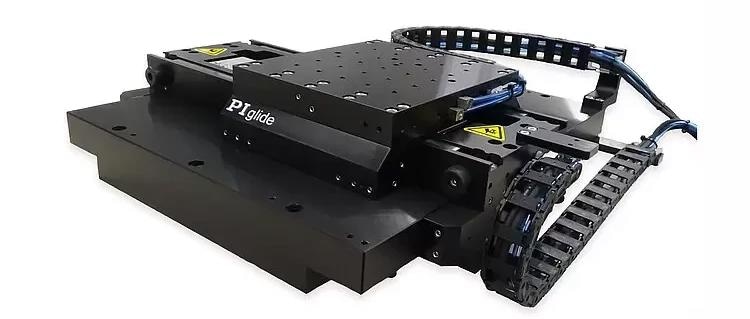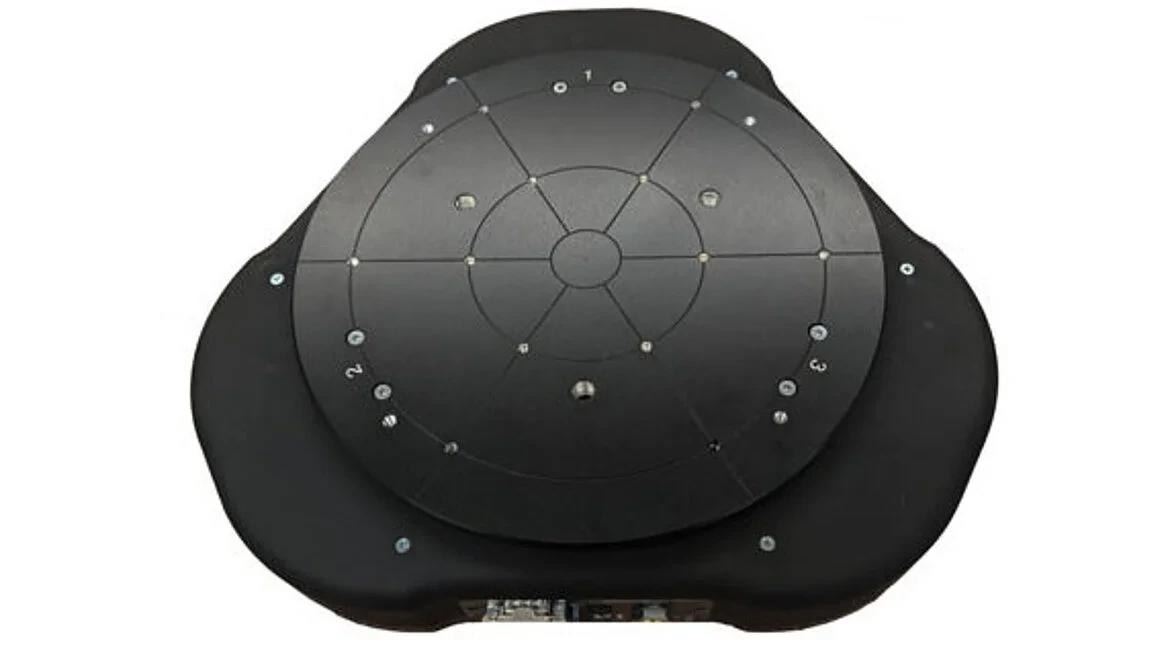The accuracy of motion systems used in precision automation applications is significantly dependent on top-tier positioning stages and motion controllers. When designing a next-generation machine or process, motion system designers frequently contemplate the decision between mechanical bearings and air bearings.
Mechanical bearings, like crossed-roller bearings and recirculating ball bearings, find widespread use in precision motion control and positioning. They are generally a good choice for most scenarios.
However, when dealing with critical factors such as lifetime, particle generation, reproducibility, angular accuracy, runout, straightness, and flatness, air bearings take the lead and merit closer examination.
Air Bearings How do they work? Example XY Air Bearing Stage, PIglide XY-Table
Air Bearings How do they work? Example XY Air Bearing Stage, PIglide XY-Table. How air bearings work. A planar XY air bearing stage with a built-in theta adjustment range for alignment or error compensation. Video Credit: PI (Physik Instrumente) LP
Air bearings operate by using a thin film of pressurized clean air or gas to support the load, akin to the principle behind an air hockey table. They maintain separation between the static and moving parts of the bearing via the pressurized gas, eliminating direct contact.
There are two fundamental types of air bearings: porous media bearings featuring millions of sub-micrometer-sized holes and bearings equipped with small, built-in orifices. In both cases, achieving uniform pressure across the entire bearing area remains a key goal for air-bearing designers.
Air-bearing surfaces undergo precision grinding to meet the highest tolerances and receive a hard coating. By avoiding direct contact (modern controllers include pressure reservoirs and switches that halt motion in case of a pressure drop), air bearings circumvent typical bearing problems like friction, wear, and the need for lubrication.
Consequently, air bearings offer substantial advantages in high-speed motion applications and precision positioning, particularly in 24/7 automation setups demanding high reliability and uptime.
PI R-Theta Stages: Semiconductor Test, Metrology, Laser Processing | Air Bearing Slides & Spindles
PI R-Theta Stages: Semiconductor Test, Metrology, Laser Processing | Air Bearing Slides & Spindles. R-theta air bearing stages are often used in semiconductor test and metrology. Video Credit: PI (Physik Instrumente) LP
Seven Benefits of Using Air Bearings in Precision Motion and Positioning Applications
1. Maintenance-Free, Virtually Unlimited Lifetime, and Clean Room Compatible: Air bearings, operating without mechanical contact, eliminate the need for maintenance, periodic checks, or lubrication cycles.
They also sidestep issues like cage migration commonly associated with cross roller bearings and suit clean room applications ideally.
2. True-Planar Motion XY and XY-Theta Motion Designs Feasible: Multi-axis stages with mechanical bearings usually stack one axis on top of another. This is a common approach but has several disadvantages.
When the upper axis reaches its limits, it puts torque pressure on the lower axis, causing geometric errors. Air-bearing designs offer a solution. Fully planar XY and XY-Theta positioning systems become feasible, aligning all degrees of freedom with a single base plane.

The A-311 planar XY air bearing stage is available with travel ranges up to 400 mm. Image Credit: PI (Physik Instrumente) LP

The A-523 parallel-kinematic Z-Tip-Tilt air bearing stage features a very low profile and high speed. Image Credit: PI (Physik Instrumente) LP
3. Vibration-Free, High-Speed Motion with Highly Constant Velocity: Air bearings, with their fluid film, easily accommodate high speeds. Some air bearings even enhance efficiency at high velocities due to aerodynamic lift effects.
Specific processes like semiconductor wafer scanning, 3D tomography, and inertial sensor testing demand steady motion at precise speeds without any bearing noise.
In such cases, air bearing systems emerge as the optimal choice, ensuring continuous motion at controlled speeds and boasting extended durability compared to mechanical bearings.
Closed-Loop Voice Coil Linear Actuator + Air Bearing | High Speed Motion | Precision Linear Slides
Closed-Loop Voice Coil Linear Actuator + Air Bearing | High Speed Motion | Precision Linear Slides. High speed linear actuator with air bearing guide. Video Credit: PI (Physik Instrumente) LP
4. Frictionless Motion and Positioning with Very High Accuracy: In linear motion, achieving accuracy within nanometers is possible using direct-drive motors and high-resolution encoders, supported by an air bearing.
For rotational applications, achieving angular resolutions down to tenths of arc-seconds is feasible. Air bearings find preference in various inspection, metrology, and manufacturing applications due to reduced hysteresis and friction effects.
The absence of friction reduces in-position hunting and significantly enhances resolution. While flexure-guided piezo stages offer similar precision, their travel ranges are considerably smaller.
XY-Theta Stages, Air Bearing Motion Systems for High Precision Laser Dicing / Processing
XY-Theta Stages, Air Bearing Motion Systems for High Precision Laser Dicing / Processing. 3-axis air bearing stage for laser processing. Video Credit: PI (Physik Instrumente) LP
5. Motion with Extreme Straightness and Flatness, Minimal Geometric Errors: Air bearings, manufactured with excellent precision, offer high accuracy. Linear air bearings ensure exceptionally flat, straight travel with minimal roll, pitch, and yaw errors.
Air bearings are highly suitable for manufacturing and measurement processes, delivering excellent repeatability and compensating for trajectory deviations.
Today's semiconductors demand single-digit nanometer tolerances, and certain automotive engine components require submicron precision. Air bearings play a crucial role in precision machining and optics inspection, ensuring repeatable part quality and measurement reliability.
6. Travel Ranges of 1 m and More Are Feasible: Amplified piezoelectric devices and flexure guiding systems are used as frictionless drive technology in nanopositioning applications.
The benefits of maintenance-free air bearings also play a role here. While piezo flexure stages can offer even quicker response times and greater precision compared to air bearings, their travel capacities typically remain under 1 millimeter.
7. Rotary Motion with Minimal Eccentricity and Wobble: Rotary air bearings prove highly effective for exact rotary motion owing to their remarkable rigidity.
In rotary stages, irregularities like wobble or tilt generally occur within a range of 0.1 to 1 arc-second. In contrast to most mechanical bearing solutions, errors resulting from wobble, axial, and radial movements are considerably smaller in air-bearing systems.

This information has been sourced, reviewed and adapted from materials provided by PI (Physik Instrumente) LP.
For more information on this source, please visit PI (Physik Instrumente) LP.